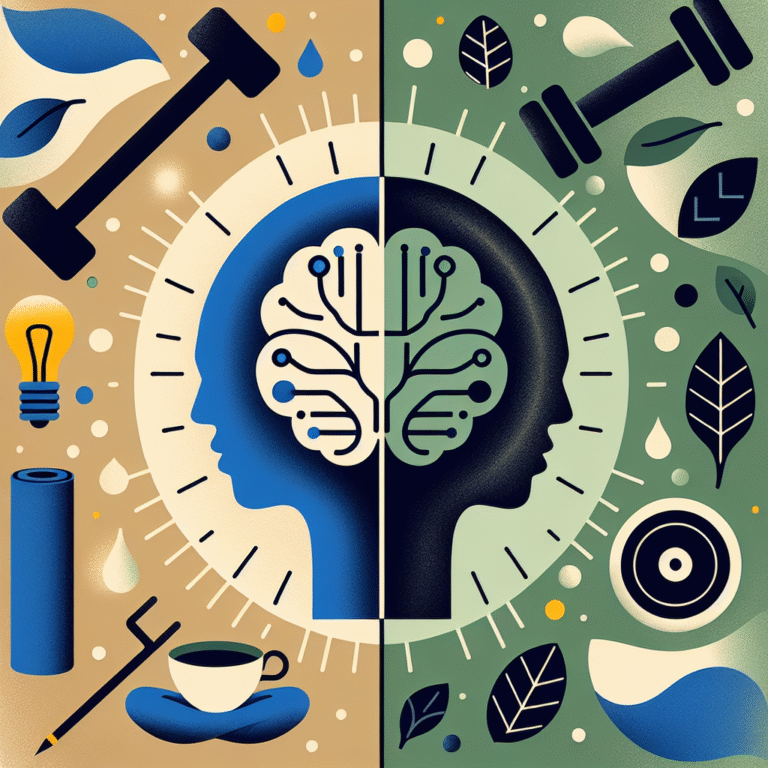
Introduction
Imagine you’ve just bought a shiny new smartphone. It’s sleek, modern, and boasts the latest features. But soon after, you discover a competing model that’s cheaper and offers similar capabilities. Suddenly, the excitement fades, replaced by unease and doubt. This scenario illustrates cognitive dissonance, an everyday psychological phenomenon that affects our thoughts, emotions, and decisions in profound ways. In this article, we will be navigating the mind’s maze: understanding cognitive dissonance and its everyday impacts, shedding light on how this phenomenon shapes our lives and informing readers of practical strategies to effectively manage it.
What is Cognitive Dissonance?
Cognitive dissonance is a psychological theory proposed by Leon Festinger in the 1950s. It refers to the discomfort experienced when holding two or more contradictory beliefs, values, or attitudes simultaneously. This state of mental tension prompts individuals to seek consistency among their beliefs or behaviors, often leading to changes in attitudes or rationalizations to alleviate the dissonance.
Key Aspects of Cognitive Dissonance
Conflict in Beliefs: Cognitive dissonance arises when there is a conflict between beliefs. For instance, if you value health but indulge in junk food, the contradiction generates discomfort.
Motivational Force: The discomfort created by cognitive dissonance motivates people to change their thoughts, beliefs, or behaviors to reduce the inconsistency.
- Rationalization Strategies: To manage dissonance, individuals often use rationalization techniques, such as devaluing the importance of conflicting beliefs or seeking out information that supports their current views.
Everyday Impacts of Cognitive Dissonance
Navigating the mind’s maze: understanding cognitive dissonance and its everyday impacts reveals how this psychological construct influences personal choices, relationships, and even societal norms.
Decision-Making in Consumer Behavior
Cognitive dissonance is particularly prevalent in consumer behavior. After making a purchase, buyers often experience feelings of regret or second-guessing.
Case Study: The Post-Purchase Dissonance Phenomenon
Consider a study by the University of Michigan where researchers explored post-purchase behavior among automobile buyers. Participants who made expensive purchases often justified their choices by amplifying the positive features of their selected vehicle while downplaying the competitor’s advantages.
Relevance Analysis: This case study exemplifies how cognitive dissonance drives consumers to rationalize their decisions to maintain a consistent self-image, highlighting its impact in everyday economic scenarios.
Relationships and Dissonance
Cognitive dissonance doesn’t just impact personal decisions; it also plays a significant role in relationships. Conflicting desires or beliefs within a relationship can generate significant tension.
Case Study: Communication Breakdowns in Relationships
A study published in the Journal of Marriage and Family found that couples often encounter cognitive dissonance when their values or priorities shift over time. For example, one partner may place higher importance on career advancement while the other prioritizes family life, leading to disagreements and dissatisfaction.
Relevance Analysis: This case highlights how navigating the mind’s maze can lead to relationship strain and the necessity of open communication to bridge gaps in understanding and expectations.
The Workplace and Team Dynamics
In the workplace, cognitive dissonance can hinder productivity and job satisfaction. Employees may confront dissonant feelings regarding their roles or organizational culture.
Case Study: Job Satisfaction and Culture
A 2020 study found that employees who valued work-life balance but worked in a highly demanding corporate culture often suffered from cognitive dissonance. This dissonance decreased job satisfaction and increased turnover rates.
Relevance Analysis: Understanding cognitive dissonance in this context can help organizations foster better workplace cultures, promoting retention and enhancing employee engagement.
Strategies for Navigating Cognitive Dissonance
Recognizing cognitive dissonance is the first step; the next is effectively managing it. Here are some actionable strategies to help individuals navigate this complex psychological landscape.
Embrace Self-Reflection
Taking time for self-reflection can illuminate conflicting beliefs and feelings. Journaling about your thoughts or discussions with trusted friends can create clarity and encourage healthier mindsets.
Seek Diverse Perspectives
Engaging with viewpoints different from your own can broaden your understanding and make cognitive dissonance a learning opportunity. The more you expose yourself to contrasting ideas, the more equipped you’ll become at resolving internal conflicts.
Set Consistent Values
Establishing and adhering to core values can guide decisions and mitigate feelings of dissonance. When you align your actions with your beliefs, you reduce the instances of cognitive discomfort.
Mental Reframing
Reframing situations in a positive light can alleviate discomfort. For instance, viewing setbacks as learning experiences can help reshape your mindset and reduce feelings of dissonance.
Educate Yourself
Staying informed about cognitive dissonance can empower you to identify its presence in your life. Understanding this psychological phenomenon allows you to approach conflicts with curiosity rather than distress.
Conclusion
Navigating the mind’s maze: understanding cognitive dissonance and its everyday impacts is crucial for personal growth, decision-making, and interpersonal relationships. By acknowledging cognitive dissonance and implementing strategies to manage it, individuals can foster more constructive beliefs and choices, ultimately leading to a more fulfilling existence. Embrace this psychological journey: it is an opportunity for insight and growth in the maze of your mind.
FAQs Section
1. What are some common examples of cognitive dissonance?
Common examples include engaging in unhealthy behaviors despite valuing health, endorsing a political view after contradicting evidence emerges, or justifying the expense of a luxury item by highlighting its social status.
2. How can I identify if I am experiencing cognitive dissonance?
Look for feelings of discomfort or tension when your actions conflict with your beliefs or values. Signs can include anxiety, regret, or changing your opinion based on new information.
3. Is cognitive dissonance always negative?
Not necessarily; while it can cause discomfort, cognitive dissonance can also lead to personal growth, reevaluation of priorities, and positive behavioral change.
4. How does cognitive dissonance affect decision-making?
Cognitive dissonance can cause individuals to second-guess their decisions, leading to anxiety about making the “right” choice or fostering the need to justify their actions afterward.
5. What role does social media play in cognitive dissonance?
Social media can amplify cognitive dissonance as people are frequently exposed to varying opinions and lifestyles, which may challenge their beliefs and create inner conflict regarding their choices.
This thorough exploration of cognitive dissonance equips readers with knowledge and practical approaches for understanding their daily decisions and experiences. In a world filled with choices and complexities, being aware of cognitive dissonance is both empowering and essential in navigating the intricate pathways of the mind.
















